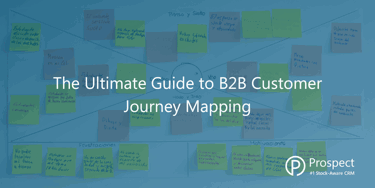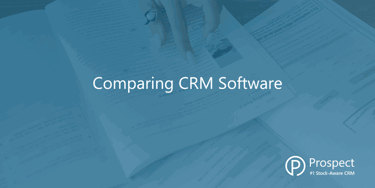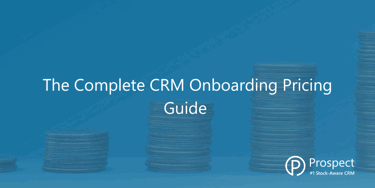
CRM for Construction Industry Suppliers: Integrating Sales, Inventory & Accounting
Read article on CRM for Construction Industry Suppliers: Integrating Sales, Inventory & Accounting
CRM Automation: Simplifying B2B Operations
Read article on CRM Automation: Simplifying B2B Operations
What is Sales & Operations Planning? A Guide to Smarter Business Strategies
Read article on What is Sales & Operations Planning? A Guide to Smarter Business Strategies
After-Sales Supply Chain Management: Why It Matters & How to Get It Right
Read article on After-Sales Supply Chain Management: Why It Matters & How to Get It Right
Why Integrating CRM & Accounting Software is Essential for Small Business Growth
Read article on Why Integrating CRM & Accounting Software is Essential for Small Business Growth
End of Financial Year Survival Guide: 5 Steps for Supply Chains to Get Ahead
Read article on End of Financial Year Survival Guide: 5 Steps for Supply Chains to Get Ahead
Why CRM is the Ultimate Supply Chain Software for the Healthcare & Beauty Wholesale Industry
Read article on Why CRM is the Ultimate Supply Chain Software for the Healthcare & Beauty Wholesale Industry
CRM for Engineering Suppliers: The Power of Integrated Solutions
Read article on CRM for Engineering Suppliers: The Power of Integrated Solutions
Cross-Selling & Upselling: Tips, Strategies & Approaches
Read article on Cross-Selling & Upselling: Tips, Strategies & Approaches
What is a Cloud-based CRM?
Read article on What is a Cloud-based CRM?
How to Extend Your Product Lifecycle
Read article on How to Extend Your Product Lifecycle
Customer Acquisition vs. Customer Retention: Where Should your Efforts Lie?
Read article on Customer Acquisition vs. Customer Retention: Where Should your Efforts Lie?
8 B2B Customer Retention Strategies for Wholesalers, Distributors, & Manufacturers
Read article on 8 B2B Customer Retention Strategies for Wholesalers, Distributors, & Manufacturers
Multi-Channel Sales: Where to Start?
Read article on Multi-Channel Sales: Where to Start?
Top 5 Mistakes Wholesalers, Manufacturers & Distributors Make When Choosing a CRM
Read article on Top 5 Mistakes Wholesalers, Manufacturers & Distributors Make When Choosing a CRM
8 Best Practices for CRM Setup
Read article on 8 Best Practices for CRM SetupFactory Automation – What It Is & How To Implement
Read article on Factory Automation – What It Is & How To Implement
The Ultimate Guide to B2B Customer Journey Mapping
Read article on The Ultimate Guide to B2B Customer Journey Mapping
Why You Should Integrate CRM & Inventory Management
Read article on Why You Should Integrate CRM & Inventory Management
The 4 Most Common Sales Blunders (& How to Avoid Them)
Read article on The 4 Most Common Sales Blunders (& How to Avoid Them)
Comparing CRM Software
Read article on Comparing CRM Software
When Should You Implement a CRM?
Read article on When Should You Implement a CRM?
How to Build, Interpret & Action CRM Reports
Read article on How to Build, Interpret & Action CRM Reports
Key CRM Functions for B2B Wholesalers, Manufacturers & Distributors
Read article on Key CRM Functions for B2B Wholesalers, Manufacturers & Distributors
The Best CRM for Your Business & How to Find It
Read article on The Best CRM for Your Business & How to Find It
The Growth Series Part 2: The Growth Playbook & How to Implement It
Read article on The Growth Series Part 2: The Growth Playbook & How to Implement It
How Much Are Manual Processes Costing Your Business?
Read article on How Much Are Manual Processes Costing Your Business?6 Powerful B2B CRM Strategies for Wholesalers & Manufacturers [+ Examples]
Read article on 6 Powerful B2B CRM Strategies for Wholesalers & Manufacturers [+ Examples]
Thinking of Expanding Your Team? Here’s How to Prepare for Growth
Read article on Thinking of Expanding Your Team? Here’s How to Prepare for Growth